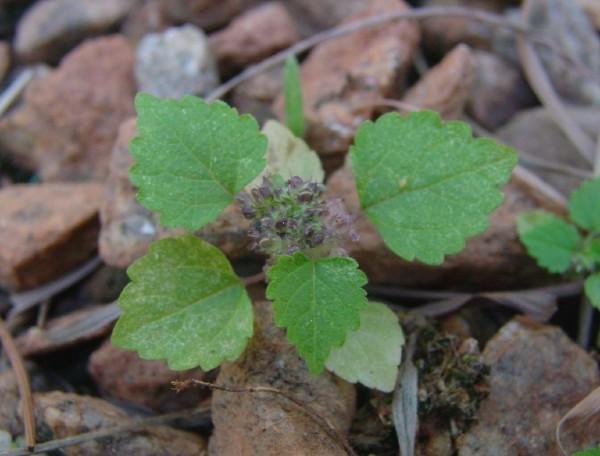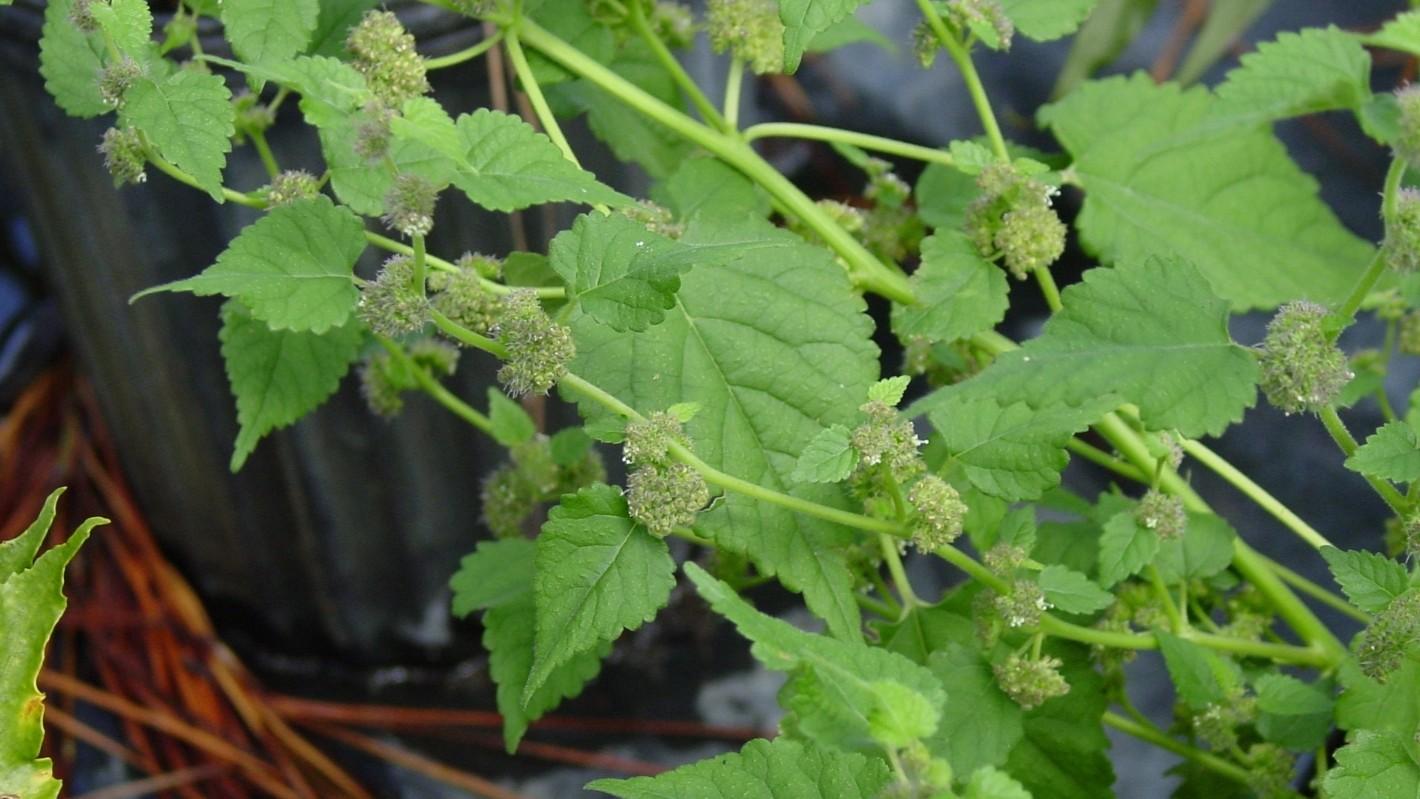Life cycle
Mulberryweed or hairy crabweed (Fatoua villosa) is a summer annual plant.
Appearance and growth habit
Leaves are triangular in shape, alternate along the stem, yellow-green in color, with prominent veins and toothed margins; prominent hairs on the stems and leaves; flowers on young plants are tan in color. Stems secrete a milky sap when cut and the plant has an oily odor. Mulberryweed can grow to 4 feet tall. It looks similar to a mulberry tree seedling when it is less than five inches tall. This is a non-native plant that originated from East Asia.
Reproduction
Mulberryweed produces pea-sized seed clusters that have the ability to discharge seeds up to four feet from the plant. It produces large numbers of seed, so good control from germination on is important. Seeds can remain viable in the soil or under mulch for several years. Seeds germinate in a wide range of temperatures, from 60-90F. Light is required for seed germination.

Conditions that favor growth
Moist, shaded areas
How to manage mulberryweed
Remove weeds from potted nursery plants prior to planting in the landscape. Hand-pull or dig out young plants. Hand removal must start early, as mulberry weed can produce seed on plants less than three inches in height. Hand pulling when the soil is moist makes the task easier.
Mowing is not an effective means of control. Mowed plants can set seeds.
You can smother mulberry weed with black plastic, a weed barrier, or layers of newspapers covered with mulch. Mulch can help suppress seed germination. However, if nearby plants spread seeds, they can germinate on mulch surfaces.
A systemic, non-selective herbicide that contains glyphosate can be used to spot-treat mulberryweed. Avoid contact with desirable landscape plants.
References
-
Schuster, Chuck. University of Maryland Extension, TPM/IPM Weekly Report, August 23, 2013.
-
Neal, Joe. Mulberryweed (Fatoua villosa). NC State Extension. https://content.ces.ncsu.edu/mulberryweed-fatoua-villosa
Still have a question? Contact us at Ask Extension.
